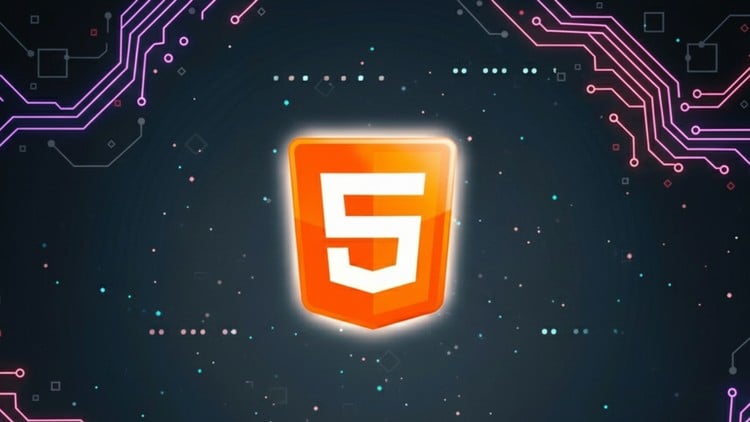
400+ HTML questions on structure, forms, and semantics. Ideal for frontend developers and certification exam prep.
👥 1,102 students
🔄 September 2025 update
Add-On Information:
Note➛ Make sure your 𝐔𝐝𝐞𝐦𝐲 cart has only this course you're going to enroll it now, Remove all other courses from the 𝐔𝐝𝐞𝐦𝐲 cart before Enrolling!
- Course Overview
- Dive into an expansive collection of over 400 practice questions designed to solidify your understanding of HTML, the foundational language of the web.
- This comprehensive resource spans the entire spectrum of HTML, from fundamental structural elements to advanced semantic markup and interactive form creation.
- Whether you’re just beginning your journey into web development or aiming to master intricate HTML concepts, this course offers a robust platform for knowledge acquisition and retention.
- Engineered for practical application, the questions simulate real-world coding challenges, fostering a deep-seated comprehension of HTML’s role in building modern web experiences.
- The course content is meticulously curated and updated, with the latest iteration released in September 2025, ensuring relevance to current industry standards and best practices.
- With 1,102 students already enrolled, this course is a testament to its value and effectiveness in preparing individuals for both practical development and formal assessments.
- It serves as an invaluable tool for self-assessment, allowing you to pinpoint areas of strength and identify specific topics requiring further study before diving into larger projects or exams.
- The structured approach of the questions guides learners through a logical progression, building confidence and competency with each level of difficulty.
- Explore the nuances of HTML document structure, the intricacies of creating dynamic web forms, and the power of semantic tags for accessibility and SEO.
- This course is not just about memorizing tags; it’s about understanding the ‘why’ behind HTML’s design and its impact on the overall performance and usability of a website.
- Requirements / Prerequisites
- A foundational understanding of basic computer operations and internet navigation is beneficial.
- Access to a computer with a modern web browser (e.g., Chrome, Firefox, Safari, Edge) is essential for interacting with potential practice environments or verifying answers.
- A stable internet connection is required to access and utilize the course materials effectively.
- While not strictly mandatory, prior exposure to introductory web development concepts or basic programming logic can enhance the learning experience.
- An eagerness to learn and a willingness to engage with coding exercises and problem-solving are the most crucial prerequisites.
- Skills Covered / Tools Used
- HTML Structure: Mastery of core HTML elements, document types, headings, paragraphs, lists, links, images, and basic page layout.
- HTML Semantics: Deep understanding of semantic tags like
<header>,<nav>,<main>,<article>,<section>,<aside>, and<footer>for improved accessibility and SEO. - HTML Forms: Comprehensive knowledge of form elements (
<form>,<input>,<textarea>,<select>,<button>), input types, validation attributes, and form submission handling. - Attributes and Properties: Proficiency in using common HTML attributes (e.g.,
id,class,src,href,alt,title) to configure element behavior and appearance. - Tables and Data Presentation: Skill in creating and structuring data tables using
<table>,<thead>,<tbody>,<tr>,<th>, and<td>. - Multimedia Integration: Understanding how to embed audio and video content using the
<audio>and<video>tags. - Basic Accessibility Concepts: Introduction to elements and attributes that contribute to web content accessibility.
- Browser Compatibility Awareness: Implicit understanding of how HTML elements render across different web browsers.
- Practice Environments: While the course focuses on questions, learners may naturally utilize text editors (e.g., VS Code, Sublime Text) or online code playgrounds to test concepts.
- Benefits / Outcomes
- Enhanced Confidence: Gain the assurance needed to tackle HTML-related tasks and challenges in real-world projects.
- Exam Readiness: Thoroughly prepare for frontend development certification exams that include HTML sections.
- Improved Coding Proficiency: Develop a more intuitive and accurate approach to writing clean and effective HTML code.
- Deeper Conceptual Understanding: Move beyond syntax memorization to grasp the underlying principles and purpose of HTML features.
- Stronger Foundation for Frontend Development: Build a solid base for learning CSS, JavaScript, and other frontend technologies.
- Increased Problem-Solving Skills: Sharpen your ability to analyze HTML scenarios and devise appropriate solutions.
- Better Debugging Capabilities: Recognize common HTML errors and understand how to correct them efficiently.
- Valuable Self-Assessment Tool: Continuously monitor your progress and identify areas for targeted improvement.
- Preparation for Advanced Topics: Lay the groundwork for understanding more complex web technologies by mastering HTML.
- Career Advancement: Acquire a sought-after skill that is fundamental to web development roles.
- PROS
- Extensive Question Bank: 400+ questions provide ample practice opportunities for comprehensive learning.
- Covers Full Spectrum: Addresses HTML from beginner basics to advanced techniques, catering to diverse learning needs.
- Updated Content: September 2025 update ensures relevance to current industry standards.
- Community Proof: Over 1,102 students indicate the course’s popularity and perceived value.
- Focused on Practice: Emphasizes practical application through a question-based format.
- CONS
- Lacks Direct Instruction: Primarily a practice-based course, it may require learners to supplement with direct instructional resources if they have zero prior HTML knowledge.
Learning Tracks: English,Development,Programming Languages
Found It Free? Share It Fast!